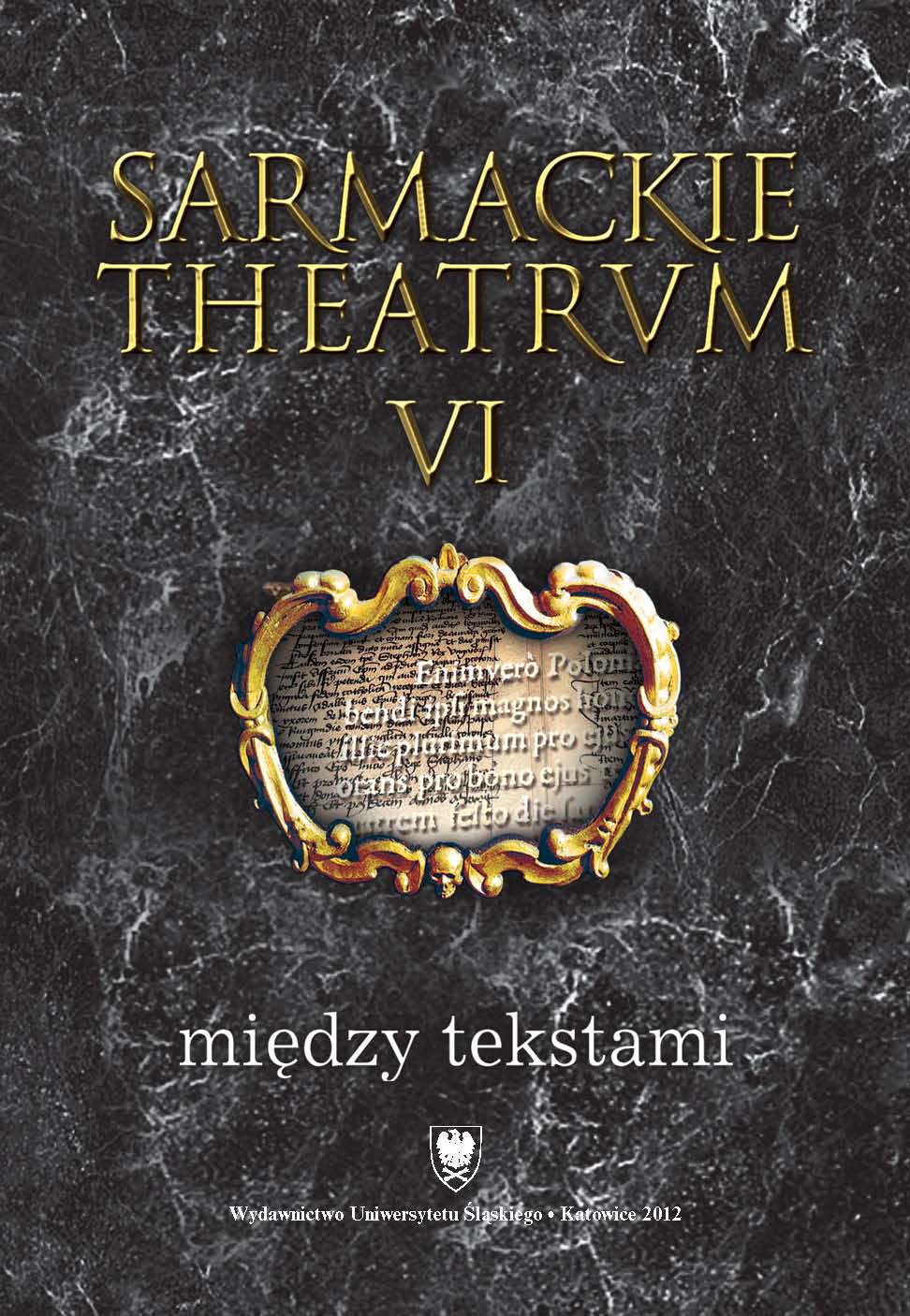Harmonie, upominki i zacne akty Siedemnastowieczne epitalamia lubelskie
Harmonics, souvenirs and good acts The 17th-century epithalamia from Lublin
Author(s): Anna Nowicka-Struska
Subject(s): Language and Literature Studies
Published by: Wydawnictwo Uniwersytetu Śląskiego
Summary/Abstract: The subject of interest in the very text constitutes three epithalamia from Lublin: Symphonianuptialis ex harmonia anni…, by Wojciech Ciechanowicz, Harmonia upominków siedmiu Lublin1636 by Jan Jurgiewicz, Na zacny i chwalebny akt weselny szlachetnie urodzonego P. Jakuba Zagórnegotakże szlachetnej Panny Zyzanny Konopniczanki… Lublin 1634 by Jan Wacław Gorecki,Na gody małżeńskie zacnie sławetnego Jegomościa P. Jakuba Wentona, rajcy zamojskiego z zacniesławetną Jej Mością Panią Katarzyną Zrubską, rajczynią lubelską, a wedding poem, Lublin1681. The very works derive from a magnate (Symphonia nuptialis — Harmonia upominków), bourgeois— noble (Na chwalebny i zacny akt weselny) and a bourgeois wedding (Na gody małżeńskieJakuba Wentona). The epithalamia in question are characterised by formal diversity. The text byCiechanowicz, devoted to the audience aesthetically advanced, was written with the idea of a stageor quasi-theatrical performance during a magnate wedding. It is rich in hermetic and esoteric contents.The other two epithalamia were to constitute a wedding memoir from bourgeois and noblebourgeoiscelebrations and an attempt to introduce genres belonging to a noble culture into theground of a bourgeois culture. They show, especially the work by Jurgiewicz, strong influences ofthe poetics from Czarnolas. The epithalamia in question present a diversified literary level. Theyreflect the Old‑Polishtradition and are inscribed into the wedding customs. They constitute a documentof a literary culture of times and social states they are a part of, clearly proving the presenceof the humanistic topics in texts devoted to the representatives of lower states: minor nobility andbourgeoisie. Also, the very works constitute an example of an all-Poland process of the applicationof the humanistic topics into the texts devoted to minor nobility and bourgeoisie. A high humanisticculture has become here a reservoir of threads and motives for the literature of a popular and occasionalcirculation. Although all of the three works refer to splendour of the “Stemptemtryjon fromLublin” are also, in view of a gradual deterioration of the level of literary performances, the evidenceof a slow collapse of the town.
Book: Sarmackie theatrum. T. 6: Między tekstami
- Page Range: 77-95
- Page Count: 19
- Publication Year: 2012
- Language: Polish
- Content File-PDF

